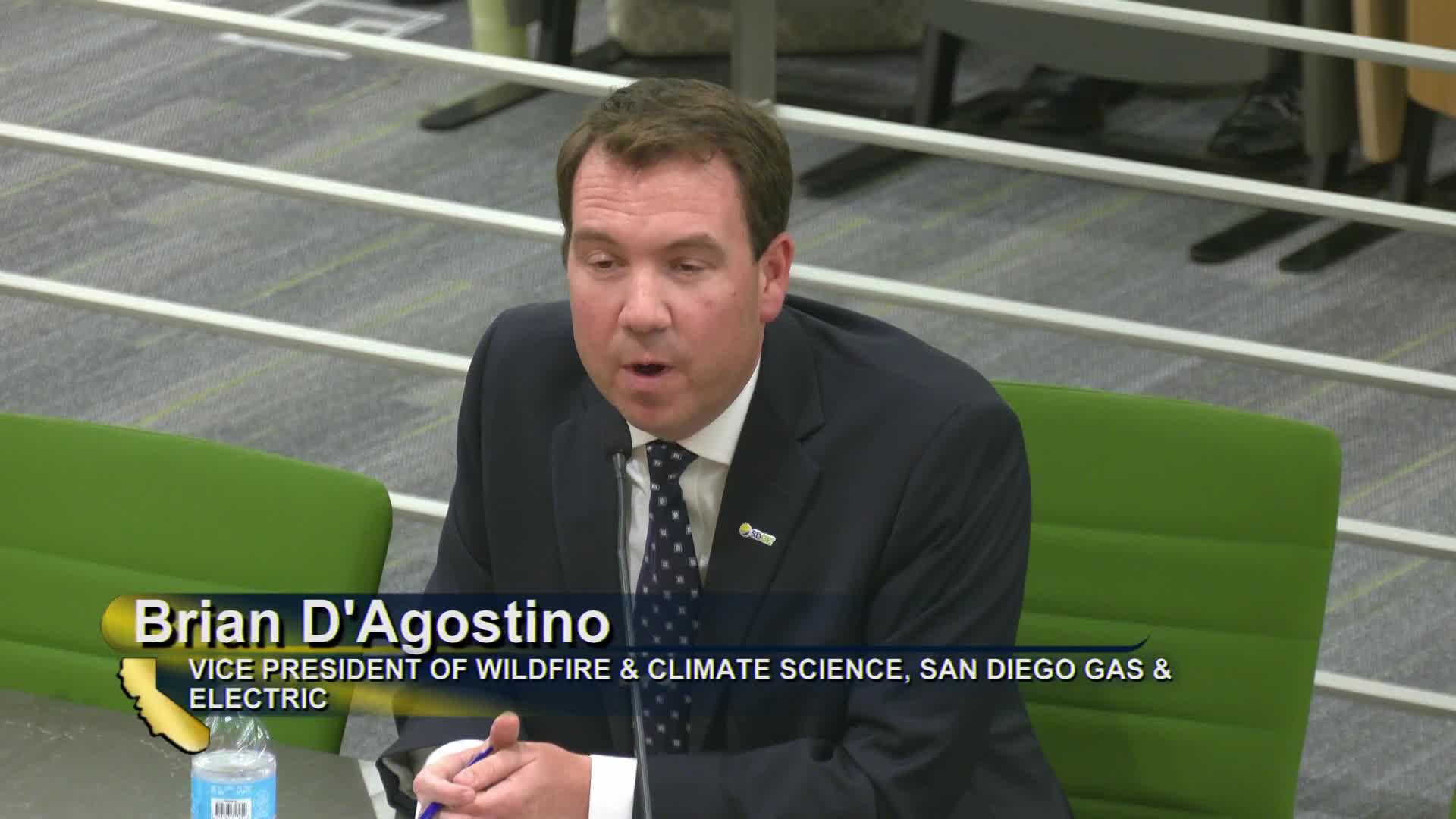AI Revolutionizes Disaster Preparedness and Infrastructure Resilience
August 29, 2024 | Governmental Organization, Standing Committees, California State Senate, Senate, Legislative, California
This article was created by AI summarizing key points discussed. AI makes mistakes, so for full details and context, please refer to the video of the full meeting. Please report any errors so we can fix them. Report an error »

In a recent government meeting, officials discussed the integration of artificial intelligence (AI) and advanced technologies in managing public safety power shutoffs and enhancing wildfire risk assessments in California. The meeting highlighted the significant role AI plays in predicting fire potential and informing decisions regarding power shutoffs, which have substantial impacts on local communities.
The discussion began with an overview of how AI is utilized to assess fuel moisture levels and predict peak wind gusts in neighborhoods, allowing for timely notifications to fire agencies and community leaders. This proactive approach enables the identification of areas at risk of power shutoffs up to three days in advance, facilitating communication with affected customers within 48 hours of an event.
Officials emphasized the importance of real-time analysis during power shutoff events, where AI evaluates the likelihood of electrical system failures and the potential for vegetation interference. This data-driven approach not only aids in decision-making but also helps assess the impact of power shutoffs on community vulnerability.
The meeting also introduced the use of a camera network and drones for monitoring critical infrastructure. The camera network, established in 2017, has been instrumental in identifying fire proximity to essential infrastructure, while drones equipped with intelligent image processing technology provide detailed assessments of equipment conditions, including hidden damages.
Additionally, Ahmed Ahmed Wani, CEO of 1 Concern, presented insights on the broader implications of infrastructure resilience in the face of climate risks. He highlighted that a significant portion of corporate losses during disasters stems from external factors rather than direct damage to facilities. Wani's company focuses on mapping and analyzing infrastructure dependencies to simulate ripple effects from disturbances, thereby aiding in emergency preparedness and response strategies.
The meeting underscored the critical intersection of technology and public safety, showcasing how innovative solutions can enhance community resilience against natural disasters and improve operational efficiency in emergency management.
The discussion began with an overview of how AI is utilized to assess fuel moisture levels and predict peak wind gusts in neighborhoods, allowing for timely notifications to fire agencies and community leaders. This proactive approach enables the identification of areas at risk of power shutoffs up to three days in advance, facilitating communication with affected customers within 48 hours of an event.
Officials emphasized the importance of real-time analysis during power shutoff events, where AI evaluates the likelihood of electrical system failures and the potential for vegetation interference. This data-driven approach not only aids in decision-making but also helps assess the impact of power shutoffs on community vulnerability.
The meeting also introduced the use of a camera network and drones for monitoring critical infrastructure. The camera network, established in 2017, has been instrumental in identifying fire proximity to essential infrastructure, while drones equipped with intelligent image processing technology provide detailed assessments of equipment conditions, including hidden damages.
Additionally, Ahmed Ahmed Wani, CEO of 1 Concern, presented insights on the broader implications of infrastructure resilience in the face of climate risks. He highlighted that a significant portion of corporate losses during disasters stems from external factors rather than direct damage to facilities. Wani's company focuses on mapping and analyzing infrastructure dependencies to simulate ripple effects from disturbances, thereby aiding in emergency preparedness and response strategies.
The meeting underscored the critical intersection of technology and public safety, showcasing how innovative solutions can enhance community resilience against natural disasters and improve operational efficiency in emergency management.
View full meeting
This article is based on a recent meeting—watch the full video and explore the complete transcript for deeper insights into the discussion.
View full meeting
